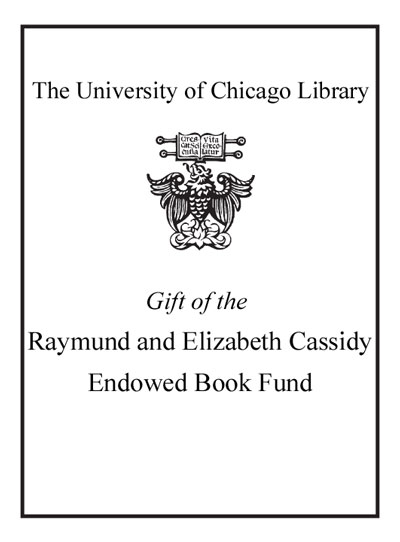Review by Choice Review
It is hard to imagine what more one might ask of an art history book intended for the general public than we are given here: Belting is prominent and well-respected, and manages to combine analyses of others' work in reasonable relation to his own contributions; the illustrations are ample, beautiful, and some of them unexpected, yet relevant; the art historical and intellectual scopes are broad; the primary work treated is famous, well-loved, historically important, and very curious; the book's cost is moderate. Although not intended for a scholarly audience, that audience will doubtless avail itself of the balanced, comprehensive, yet far from dull or routine analysis of a work we have all shaken our heads over, and even experts may benefit from the bibliographical summaries, arranged by chapter rather than by author. The writing is not only accessible, but invigorating and inviting, without being simplistic or repetitious. May this essay about the "first sensation" in the history of art prove a bellwether for the profession and for its wider reading public. All levels. P. Emison University of New Hampshire
Copyright American Library Association, used with permission.
Review by Library Journal Review
Although Hieronymus Bosch's triptych painting, The Garden of Earthly Delights, has fascinated viewers for centuries, commentators have been perplexed about its intended meaning. In this book, German art historian Belting (Thomas Struth) argues persuasively for an interpretation of the enigmatic central panel as a representation of the earthly paradise that would have existed if Adam and Eve's fall had never taken place. Belting's book is more philosophical and less comprehensive than Jos Koldeweij and others' recent Hieronymus Bosch: The Complete Paintings and Drawings, and Belting's discussion of the religious and cultural context of Bosch's art sometimes strays so far from the art itself that it is hard to see the connection. This book is valuable, however, for its novel view of a much-discussed painting. A large foldout reproduction of the triptych and many close-up views and reproductions of several related works add to the book's value. Recommended for scholarly and specialized collections.-Kathryn Wekselman, Cincinnati, OH (c) Copyright 2010. Library Journals LLC, a wholly owned subsidiary of Media Source, Inc. No redistribution permitted.
(c) Copyright Library Journals LLC, a wholly owned subsidiary of Media Source, Inc. No redistribution permitted.
Review by Choice Review
Review by Library Journal Review

